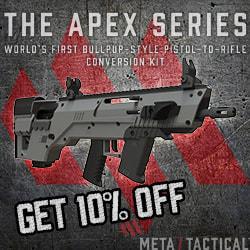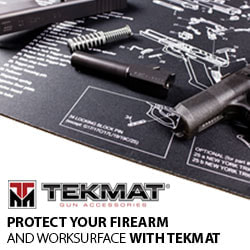Top 3 Mistakes for Women Gun Owners When Purchasing a Pistol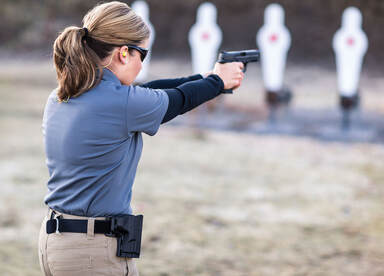 Purchasing a pistol is an important decision for any gun owner, including women. However, women may have specific considerations that can impact their firearm selection. Avoiding common mistakes can ensure that women gun owners find a pistol that meets their needs, preferences, and promotes their comfort and confidence. In this blog post, we will discuss the top three mistakes women gun owners make when purchasing a pistol and provide tips on how to avoid them. 1. Ignoring Ergonomics and FitOne of the biggest mistakes women gun owners make is overlooking the importance of pistol ergonomics and fit. Here's what you should consider:
2. Lack of Holster ConsiderationsHolster selection is a critical aspect of concealed carry for women gun owners. Avoid these mistakes when choosing a holster:
3. Disregarding Training and Confidence BuildingAnother common mistake for women gun owners is neglecting proper training and confidence building. Consider the following:
Disclaimer: Always prioritize safety when handling firearms. Familiarize yourself with local laws and regulations regarding gun ownership and purchasing.
0 Comments
Top 3 Mistakes for New Gun Owners When Purchasing a Pistol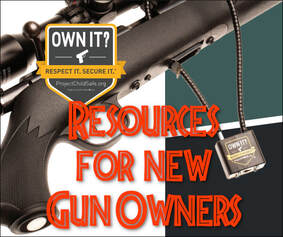 As a new gun owner, purchasing your first pistol is an exciting and important step. However, it's essential to approach the process with knowledge and caution to ensure you make an informed decision. Avoiding common mistakes can save you time, money, and potential disappointment. In this blog post, we will discuss the top three mistakes new gun owners make when purchasing a pistol and provide tips on how to avoid them. 1. Lack of Research and KnowledgeOne of the biggest mistakes new gun owners make is diving into a pistol purchase without conducting proper research or acquiring sufficient knowledge about the firearm. Here's what you should consider:
2. Impulsive Buying DecisionsNew gun owners often fall into the trap of making impulsive buying decisions, which can lead to dissatisfaction or regret later on. Avoid these pitfalls with the following considerations:
3. Neglecting Safety and TrainingNew gun owners sometimes overlook the importance of safety and training, both before and after purchasing a pistol. Avoid this mistake by prioritizing the following:
Disclaimer: Always prioritize safety when handling firearms. Familiarize yourself with local laws and regulations regarding gun ownership and purchasing. Top 5 Mistakes When it Comes to Carrying Concealed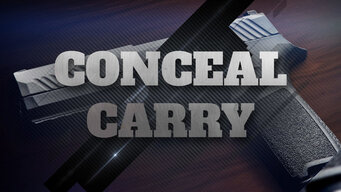 Carrying a concealed firearm is a significant responsibility that requires knowledge, preparation, and adherence to best practices. To ensure your safety and the safety of those around you, it's crucial to avoid common mistakes that can compromise your ability to carry concealed effectively. In this blog post, we will discuss the top five mistakes to avoid when carrying concealed and provide tips on how to rectify them. 1. Inadequate Holster SelectionSelecting the right holster is essential for safe and comfortable concealed carry. However, many people make the mistake of choosing an inappropriate or poorly designed holster. Here are a couple of considerations:
2. Negligent Trigger DisciplineNegligent trigger discipline is a critical mistake that can lead to unintentional discharges and potentially disastrous consequences. It's crucial to avoid placing your finger on the trigger until you're ready to shoot. Here's what to keep in mind:
3. Poor Concealment ClothingProper concealment is essential to maintain the element of surprise and ensure your firearm remains hidden from view. However, wearing inappropriate clothing or neglecting to consider concealment factors can compromise your efforts. Consider the following:
4. Lack of Training and PracticeCarrying concealed comes with the responsibility of being proficient in firearm handling and self-defense. Unfortunately, many people make the mistake of neglecting regular training and practice. Here are a couple of aspects to focus on:
5. Lack of Situational AwarenessCarrying concealed requires a heightened sense of situational awareness to identify potential threats and respond appropriately. Failing to maintain awareness can leave you vulnerable. Consider the following:
Disclaimer: Carrying concealed firearms is subject to local laws and regulations. It is your responsibility to familiarize yourself with and comply with all applicable laws. Top 3 Mistakes When it Comes to Shooting Pistols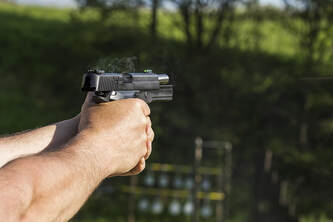 When it comes to shooting pistols, it's essential to develop proper technique and avoid common mistakes that can affect your accuracy, speed, and overall performance. Whether you're a beginner or an experienced shooter, being aware of these mistakes will help you improve your skills and enhance your shooting experience. In this blog post, we will discuss the top three mistakes to avoid when shooting pistols and provide tips on how to correct them. 1. Poor GripHaving a solid grip on your pistol is crucial for accuracy and recoil management. One of the most common mistakes shooters make is gripping the pistol too loosely or incorrectly. Here are some grip-related errors to watch out for:
2. Improper Sight AlignmentProper sight alignment is vital for hitting your target consistently. Failing to align your sights correctly can lead to missed shots or a significant decrease in accuracy. Here are a couple of sight alignment mistakes to avoid:
3. Anticipating RecoilAnticipating recoil, also known as flinching, is a common mistake that affects shooters of all experience levels. It occurs when a shooter involuntarily tenses up or jerks the pistol just before the shot is fired. This anticipation can throw off your aim and result in inconsistent shot placement. Here's how to overcome this mistake:
By being mindful of these top three mistakes and implementing the suggested tips, you can enhance your shooting skills and improve your overall performance with pistols. Remember, practice makes perfect, so dedicate time to refine your technique and build your confidence. Happy shooting!
Disclaimer: Always prioritize safety when handling firearms. Seek professional instruction and adhere to local laws and regulations There are several ways to carry a concealed firearm, and the best method will depend on personal preferences, body type, and the type of firearm being carried. Some common methods of concealed carry include: 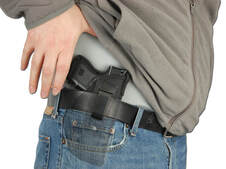 1. Inside the waistband (IWB): This method involves carrying the firearm inside the waistband of the pants or skirt, with the grip of the gun positioned above the waistband. IWB carry can be comfortable and concealable, but it may require larger clothing sizes or looser clothing to accommodate the firearm. 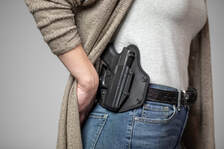 2. Outside the waistband (OWB): OWB carry involves carrying the firearm outside the waistband of the pants or skirt, with the gun held in a holster attached to the belt. OWB carry can be comfortable and accessible, but it may be more difficult to conceal than IWB carry. 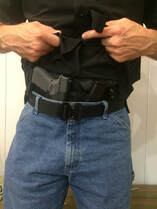 3. Appendix carry: This method involves carrying the firearm in front of the body, in the area between the hip and waist. Appendix carry can be comfortable and concealable, but it requires careful attention to safety and trigger discipline. 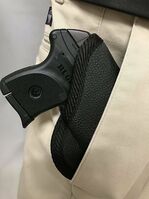 4. Pocket carry: Pocket carry involves carrying a small firearm in a pocket holster in the front pocket of pants or a jacket. Pocket carry can be comfortable and discreet, but it may not be suitable for larger firearms. 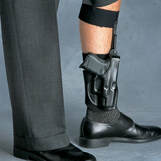 5. Ankle carry: Ankle carry involves carrying a small firearm in a holster attached to the ankle. Ankle carry can be comfortable and discreet, but it may be difficult to access quickly in a self-defense situation 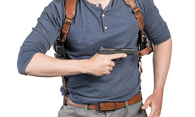 6. Shoulder carry: Shoulder carry involves carrying the firearm in a holster attached to a shoulder harness. Shoulder carry can be comfortable and accessible, but it may require larger clothing sizes Overall, the best method of concealed carry will depend on personal preferences, body type, and the type of firearm being carried. It is important to choose a method that is comfortable, safe, and accessible in a self-defense situation.
Compact and subcompact pistols are both small and lightweight handguns that are designed for concealed carry or for use as a backup firearm. However, there are some differences between the two. A compact pistol is typically a small version of a larger handgun, such as a full-size service pistol, with a shorter barrel and grip. Compact pistols are designed to be easier to conceal than their full-size counterparts while still retaining many of the same features and capabilities. They generally have a magazine capacity of around 10-15 rounds and are chambered in popular self-defense calibers like 9mm, .40 S&W, and .45 ACP. Also in the compact section of firearms you also have single and double stack modifications. Also multiple stock options with compact size barrels and slides like the Springfield XDM or the Glock 45 that has the compact slide and barrel with the full size frame. A subcompact pistol is even smaller and more compact than a compact pistol, with a shorter barrel and grip. They are designed to be even easier to conceal than compact pistols, and are often used as a backup gun or for deep concealment. Subcompact pistols typically have a magazine capacity of around 6-10 rounds, and are also chambered in popular self-defense calibers like 9mm, .40 S&W, and .45 ACP. Overall, the main difference between a compact and subcompact pistol is their size and weight, with subcompact pistols being even smaller and lighter than compact pistols. However, both types of pistols are designed for concealed carry and can be effective self-defense tools if used properly. Be sure to do your research on the manufacturers website or great spec sites like HandGunHero.com
Ask just about any shooter with any experience how they like ported barrels on guns and you’ll get some strongly worded answers. Some are raucously opposed to “Putting holes in the barrel!”, while others think a proper handgun can’t be shot well without ports or a comp of some sort. The issue I have with both the nay-sayers and the activist supporters is most have very little actual experience shooting them side-by-side. One may be a long-time “non-comp” shooter put off by a perceived higher muzzle blast and increased noise, so they shut that option out. Others might have learned to shoot or have a good deal of experience with a compensated gun of some sort. They may look with disdain upon anyone foolish enough to shoot a gun without a compensator or ports. “Oh, the humanity!” It’s like endorsing one political candidate — in spite of another also having some positive traits — and keeping your ears plugged to any positive arguments except the ones about your candidate. That’s called confirmation bias. It’s when you’ve made a decision about something — cars, knives, ammo, comp guns or non-comp guns, etc. — then only consider information supporting your opinions. Often, in spite of nearly overwhelming evidence showing those opinions might be incorrect, those same people continue to shut out any new information. I began to wonder if I might have applied this to the question of porting on guns, which led me to this test. Ports and Comps First, let’s consider the terminology we will use when discussing this topic. Comps can be elaborate contraptions going onto the muzzle end of a handgun, or just simply ports cut into the top near the muzzle. In the 1980’s, the age of the compensated gun in competition exploded onto the scene, and rightfully so. A comp allowed shooters to shoot faster, more accurately and more smoothly, so they dominated the circuits. That spilled into the standard marketplace, and soon it seemed as though comps of one sort or another were available to everyone. Some of those elaborate comps vented loads of pressurized gases and were, indeed, quite loud. I think, more than anything, that’s what prompted many non-competitors to wonder what the big deal was. If you’re shooting a weekend match, or just plinking or even handgun hunting, why put up with the Sturm und Drang and general fuss a compensator generates for just a few shots? I’d tend to agree. Most also think having those ports or a comp “out there” greatly reduces the gases pushing the bullet out of the bore, tending to negatively affect velocity. This perceived hacking away at potential velocity has turned many shooters off to the idea of comps or ports. “I want every bit of velocity I can get!” they cry out. “And I’ll be damned if I’ll use ’em,” they add, “even if they might help me shoot faster and more accurately!” So there. Can Less Be More?In 1972, Mag-Na-Port burst onto the shooting scene on the cover of an issue of Guns and Ammo magazine. These elegantly shaped, small rectangular ports on a gun’s upper muzzle area were almost unnoticeable. Developed by Larry Kelly, the process employed Electrical Discharge Machining (EDM) — which doesn’t use mechanical cutters — to make those precise, definitively shaped ports. EDM uses an electrode and an anode to allow current to flow, “eating away” metal, but never touching it. Complicated shapes can be produced, and Larry realized he was onto something. Mag-Na-Port technology was introduced to the shooting public and soon gained its approval. The general ambient fuss normally generated by a competition-type comp was replaced by small, precisely aimed jets pointed “just so” to keep muzzle flip down. Many called the technology a game-changer. Today, Mag-Na-Port is run by Larry’s son, Ken Kelly, and is more popular than ever. The process can also be used on rifles and shotguns, as well as handguns of all kinds. An autopistol has ports cut through the barrel as well as the slide, allowing the escaping gas to help force the muzzle down as the bullets leave the bore. A revolver just has ports through the top of the barrel near the muzzle. Mag-Na-Port has been doing their magic on factory guns of all sorts for decades. It’s well proven — and got me thinking. Ported GunsIn chatting with editor-in-chief of The Armory Life, Mike Humphries, I told him I thought it’d be an interesting test to compare identical 1911s, one ported and one un-ported. “Let’s see what really happens in the real world,” I suggested. I wanted to determine how much velocity something like Mag-Na-Porting really cuts. And, if it does lower the velocity, to what degree — and does that percentage really matter? Is the reduced muzzle flip worth a bit of velocity loss? I figured using a relatively straightforward, but high-quality 1911 as the base for the test made sense. So, I requested two stock 5″ Springfield Armory Garrison 9mm pistols. One of them went to Mag-Na-Port so they could do their magic with two ports. Soon we got a “Your gun’s done,” call from Ken Kelly and it landed at my FFL. My idea was simple, but time-consuming. I was going to assemble as many different 9mm loads I could find in my stash and shoot them over a chronograph. Each load would have five rounds fired from each gun and I’d collect the data. I also wanted to pay close attention to how different each load felt regarding perceived recoil, muzzle flip and anything else popping up. In the interest of full disclosure here, I started this fairly firmly in the “I don’t need a comp to shoot well” crowd. I’ve also always assumed (dangerous, right?) a comp or port-style modification would negatively affect velocity a good deal. So, here we find ourselves on new ground, and with the ability soon to point our fingers and say, “See, I told you so.” I just wasn’t sure who would get the finger pointed at them. Testing Ported BarrelsI ended up with more than 25 loads from my stash of 9mm ammo. Over the years as editor of American Handgunner, I had accumulated a good cross-section of loads from different makers I used during gun tests. I have countless boxes missing “a few rounds” for chronographing or accuracy testing, so this was a good time to use up some of that ammo. Kindly see the chart for specifics. The drill was to load five in a magazine, shoot five over the chrono documenting each shot’s velocity, then load five more of the same and repeat things for the other gun. I shot the un-ported stock Garrison first, followed by the Mag-Na-Ported version. About 300-odd rounds later I was done with the shooting portion. I had to re-shoot a few loads due to “fault” readings on the chrono, which is common with the electronic beasts. This also allowed me to get a feel of the stock gun and the pistol with the ported barrel and slide, one right after the other. I was able to compare the differences in perceived recoil and muzzle blast and will admit my comparison is subjective. But I’ve been shooting handguns for nearly six decades, so I’m attuned to some of the more subtle nuances of what’s going on regarding recoil and muzzle blast. Refer to the chart for details and numbers. The velocities listed are an average of five rounds for each load. I also downloaded a decibel meter app for my iPhone. Doing some experimenting, I found it seemed to be reliable. My chainsaw showed it was as loud as a chainsaw, according to their chart. My tractor met the specs for tractor noises and my barking Aussie Shepherds pegged the “barking” limit of the app. Data PointsSince I was doing the work, I included a Springfield 911 (3″ barrel) I own in the mix to see how these loads are affected by a shorter barrel with no ports. It’s just FYI info for you to compare against the “full-sized” 9mm autos. Call it a bonus. First, let’s get the noise question out of the way. I started the test firmly convinced the Mag-Na-Ported gun would be “a lot” louder than the stock gun. After shooting, I seemed to feel a bit more muzzle blast on my arm and face, but it was hard to tell if it was louder. Some of the higher velocity loads might have barked a tad more in the ported gun, but it was hard to tell for sure. The DB meter told me the un-ported gun averaged about three to five points lower noise than the ported gun, depending upon the load. The light/high-velocity loads were the most obnoxious in either gun. The stock gun ran in the 105 DB range (differing load to load) while the ported gun averaged 108 to 110 or so. According to my research, that’s not significant, although it is louder. But both are above the 100 DB limit of “permanent damage” if you’re exposed to it, so wear your ears. As a test, I also fired a .44 Magnum, promptly pegging the meter at 120. I suppose it was actually louder, since the meter couldn’t read higher. I read online some gun reports can approach 140. I want to stress this was an informal test, but I confess I was surprised the ported gun didn’t show as being considerably louder. I’m assuming the “noise” is the same (same powder, same load, same “explosion”), but the porting allows “some” of that sound to be closer to your ear. Hence, they might seem louder. The real surprise for me came as I assembled the velocity data. I had expected the ported Garrison to show significantly lower velocities, at least with some loads. But nope, and as a matter of fact with some loads it was just a tad higher. Overall, there were five loads showing higher velocities in the ported gun than the stock gun. I profess I don’t know why or how that is. The biggest velocity difference I could find was only 5.6 percent lower in the ported gun, say, around 50 feet per second (fps) or so. The chart shows the loads compared so you can see for yourself. As near as I could manage with my high school math is the ported gun averaged about one percent less velocity than the stock Garrison (give or take just a smidgen). To me, a load generating, say, 1,187 fps in the un-ported gun and 1,151 in the ported gun — Black Hills 115-gr. FMJ for instance — is fine in either gun. The Speer Lawman 147-gr. TMJ showed 981 in the stock gun and 970 in the ported gun, a difference of only 11 fps. You can have much more variance than that just in round-to-round differences. An interesting point is the fact virtually all of the loads having velocities listed on the boxes showed higher fps figures over the chronograph. A few, like the Buffalo Bore loads, were almost spot-on with the velocities listed on the boxes. They were also very consistent between the two guns, with just ten fps or less between the ported vs. un-ported models. But they test with real guns, not pressure barrels. (see attached PDF for data) And the Winner Is …Truthfully, I think we’re all winners here. While I honestly feel the Mag-Na-Ports did help to keep muzzle flip down significantly, those same ports also didn’t affect velocity in any manner anyone should fret over. If you’re interested in competition where fast shooting and target-to-target movement are critical things, I’d think about getting ports. What additional perceived blast there might have been was hardly noticeable, at least to me. For a defensive gun, I’d be interested in seeing how these ports work on one of the smaller .380-sized autos, which tend to be snappy and flip the muzzle. Would a ported barrel for concealed carry work? I’ll look into that. If you favor un-ported guns, that’s fine too. I felt the overall recoil of the ported gun to be just a tiny bit snappier than the stock gun, while keeping the muzzle lower. That energy has to go someplace, so it goes backwards into you. Normally it’s “wasted” generating muzzle flip, so the stock gun felt slightly “softer” in recoil, at least to me. But I don’t think the owner of an un-ported gun can reliably exclaim his gun generates enough higher velocity to matter in the real world. We could go on about shooting a ported gun close to the body and the fact it may put some blast in your face. Or how the flash might “blind you” at night. In my own tests shooting “flashy” loads at night, I could hardly see them usually, and often didn’t see them at all. I’ve also shot ported guns close to my body with no ill-effects. I suppose if you aimed the ports right into your face it might make a difference, but at that point you’re likely rolling around wrestling for your gun, so I doubt you’d even notice? So, my final word? I wouldn’t worry about this one bit. Shoot ported guns if you like them, or un-ported if they float your boat. I’ll call it a draw, with each side having their own set of advantages — and disadvantages. And, wanting to try out Mag-Na-Porting it might just be a good excuse to buy a new gun! By Roy Huntington Every striker-fired pistol pretty much looks the same...but which ones are the best?? We've got the rundown on the best striker-fired pistols. Whether you are a fan of striker-fired guns or not, they are what’s hot, what’s hip, and they are here to stay. But what has all that popularity gotten us? Well, a lot of black polymer pistols that look really similar. There is a dizzying amount of striker-fired pistols on the market today, and it can be tough to figure out what sets them apart from the competition and, more importantly, which one might be right for you. Keep reading to see what we recommend! Now, onto our favorites in no particular order!! 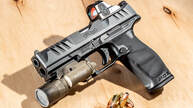 Walther PDP Last but definitely not least is the Walther PDP, and boy, does it have us in a lather. To be honest, we love these guns, but for a good reason. The PDP comes in various configurations, and we love them all. Walther’s Performance Duty Trigger has a little bit of take-up to a defined well, then a very clean break right at around 4-4.5 pounds, and a very short reset. This is one of the best striker-fired triggers on the market, only matched by guns like the Canik Rival (a Walther clone). All PDPs come with optics-ready slides, but the downside is that you have to submit a request to Walther to have them mail you the adapter plate for your specific red dot. As usual, Walther implemented excellent ergonomics in the form of good grip texture and chunky Super Terrain slide serrations. Users with small to medium-sized hands will also appreciate the extended, easy-to-reach ambidextrous slide release. While it lacks traditional finger grooves, there are raised portions on the grip that act as “suggestions” to help guide hand placement. The PDP is also available in various barrel lengths and also with full-size (18+1 capacity) and compact (15+1 capacity) grip sizes. Additionally, Walther has recently introduced the PDP-F, which features a reduced grip to trigger reach and an easier to rack slide. Accuracy and reliability are hallmarks of all Walther duty guns; the PDP has that in spades. BEST OVERALL: Coming from a Glock guy that says a lot!! Still not sold? Check out this 10,000-round review video of the PDP below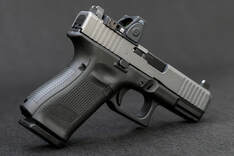 Glock 19 You knew it was coming. I knew it was coming. What list isn’t complete without a Glock 19? The one and only Glock 19, in the flesh. Many designs have come and gone, but the Glock 19 has remained and is widely considered the gold standard of striker-fired pistols. Why is that? One word — reliability. With decades of military and law enforcement use under its belt, the Glock 19 is the most time-tested handgun on this list, in addition to being the most popular handgun in the world (with the biggest aftermarket). Glock’s widespread usage means you can get all the aftermarket bells and whistles you can dream of. Its 15+1 capacity and 4-inch barrel have become the industry standard size for compact pistols. The trigger isn’t the best and is pretty spongy by today’s standards, and the ergonomics are a bit blocky for our taste. However, these guns still point well, shoot well, and their simplicity and ease of use can’t be understated. Those who put a premium on reliability, flexibility, and simplicity will be hard-pressed to find a gun that does those better. MOST RELIABLE: You can literally throw this in Sheol and it would still shoot! Check out this 3,500-round review of the Gen 5 Glock 19! 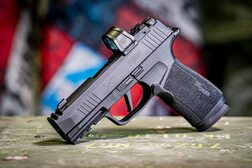 Sig Sauer P365 X-Macro The X-Macro is Sig’s latest evolution of their ultra-popular micro-compact P365, and we have to say…it delivers. The X-Macro packs a ton of features in a small package. Even though it is only 1.1 inches wide and 5.2 inches tall, the X-Macro has a mind-boggling capacity of 17 rounds of 9mm. No other manufacturer has managed to stuff this many rounds in a gun this size. Features include an optics-ready slide that lets you keep the rear sight when a red dot is installed, X-Ray night sights, a full 1913 accessory rail, extended beavertail, and an integrated compensator. The integrated compensator makes follow-up shots a breeze. Additionally, Sig was able to retain the full frame, slide, and fire control unit compatibility with previous versions of the P365. Overall, the solid ergonomics, a good trigger, and the compensator make the X-Macro far easier to shoot than you might expect, making it an excellent choice for those wanting to maximize capacity without getting a full-size pistol. BEST FOR CONCEALED CARRY: With the narrow size and 17 round capacity this is pretty much a no brainer. Don’t forget to check out this great review from the guys at PewPewTactical of the P365 X-Macro full review! 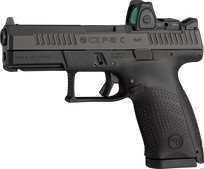 CZ P-10C Sometimes guns punch above their weight class, and we definitely feel that way about the CZ P-10C. It may look like another Glock 19-type clone, but in the end, you are getting more for your money. While it may look run-of-the-mill, the CZ P-10C feels far from it.For starters, users will find a surprisingly nice striker-fired trigger on the P-10C. Secondly, CZ worked their ergonomic magic to produce a gun that avoids that blocky 2×4 feeling of some other polymer pistols. Aggressive grip texturing and slide serrations, a deep beavertail, and mild palm swells help this pistol feel like it ”locks in” to your hand. The P-10C shoots flat and fast, even in its stock configuration. Metal sights are also a nice upgrade over much of the competition, and optics-ready versions are also available. Metal 15-round magazines are also standard. The result? A super flat shooting, comfortable pistol with great features that comes in under $500. BEST VALUE: the only pistol on the list new under $500, with the Walther coming in second Want to know more? Head on over to see another great review of the CZ P-10C! 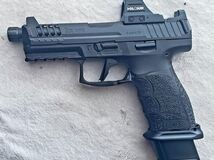 HK VP9 I know it sounds like heresy, but HK’s best gun just might be their cheapest one — the VP9. The VP9 came later to the game than many of its contemporaries, but it came to play. Why is that, you say? Well, they finally made a handgun to compete for civilian sales rather than trying to lock down military and agency contracts. Taking aim at other striker-fired guns on the market, the VP9 set out to do a lot of things better, and it did. The trigger is excellent, and the trigger guard offers generous room for those who shoot with gloves. For starters, the VP9 has one of the better striker-fired triggers on the market. It is relatively crisp, with a predictable break and a fairly short reset. Old models used 15-round magazines, while newer models have a 17-round capacity. Where this gun truly shines is ergonomics. Not only are the backstraps interchangeable, but the side panels are too. This allows left or right-handed users to adjust the palm swell to fit them perfectly. Good ergonomics means a good grip, and a good grip means better shooting. Standard VP9s sport an ambidextrous paddle magazine release. It can take some getting used to, but it is quick and intuitive after the switch is made. For those that prefer a traditional button release, HK also produces a VP9-B variant. Additionally, you get good slide serrations, as well as rear cocking wings that make racking the slide a breeze. These guns are accurate, comfortable, and still deliver the famed quality and reliability that HK is known for. It is capped off with a sizeable ambidextrous slide release, making this one of the most lefty-friendly guns out there. MOST ERGONOMIC: One of my biggest complaints about Glock is what the HK nails. Plus I am a lefty so the ambi appeals to me! Wondering if this is the gun for you? Take a look at the full review of the VP9! Honorable MentionsNarrowing it down to just five pistols was challenging; unfortunately, not everything could make the cut. With that in mind, we snuck in two pistols in the video that didn’t quite make our best of but that we still like. 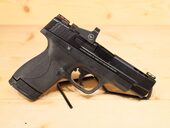 Smith & Wesson M&P 2.0 Metal Life is better with a bit of heavy metal, right? It’s aggressive. It’s mean. And it’s fun to shoot. Smith and Wesson took their venerable M&P and glammed it up with an all-metal frame and an improved trigger to create the M&P 2.0 Metal. With good looks in tow, it also has a jaw-dropping performance to match. These guns are extremely accurate, fast shooting, and soft-recoiling. They are a bit heavy for duty use for some and are on the slightly pricier side for a striker pistol, but they run. 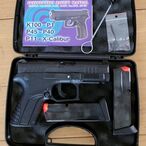 Grand Power Q1S The Grand Power Q1S is by far the strangest inclusion on the list, but hey, some of us are strange people. Grand Power may not be at the forefront of most people’s thoughts when it comes to handguns, but they offer some great features at reasonable prices. Much like the Beretta PX4, the Q1S features a rotating barrel design that helps reduce muzzle flip. With a smaller 3.6-inch barrel, the recoil reduction is both noticeable and welcome. Additionally, the gun has a shockingly good 3.5-4lb trigger that breaks cleanly at 90 degrees. Consider the fact that you get metal sights, fully ambidextrous controls, and three 12-round magazines for around $400, and you have a real sleeper on your hands. Final Thoughts:Striker-fired pistols have improved so much in the last 15 years that it is hard to pick just five and keep the list manageable. The good news is that striker-fired pistols are so popular there is definitely one out there for you. If you didn’t see a specific gun here, be sure to check out our other articles, as we might just have what you are looking for. What’s your favorite striker-fired handgun? Sound off in the comments below. |
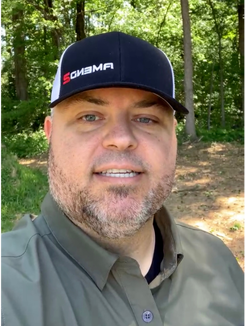
Jesse London The founder of Instinctive Advantage saw a hole in training in the firearms community and wanted to spread more extensive knowledge to get new shooters more involved with self defense and home protection. Instinctive Advantage classes are based on a combination of law enforcement training and 30 plus years of firearms experience. Archives
July 2023
Categories |
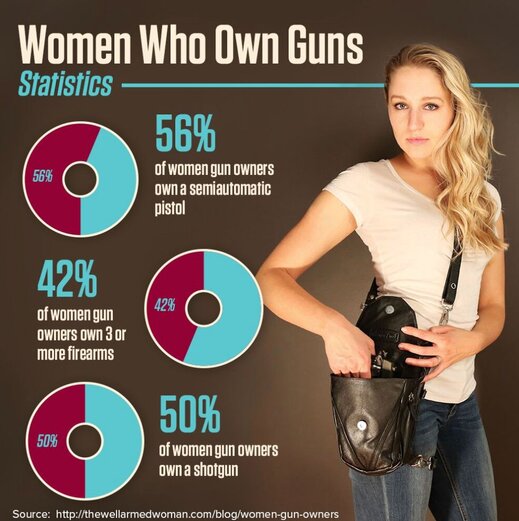
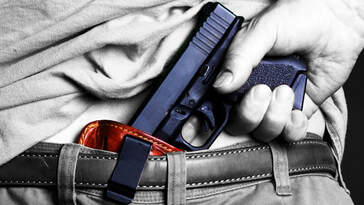
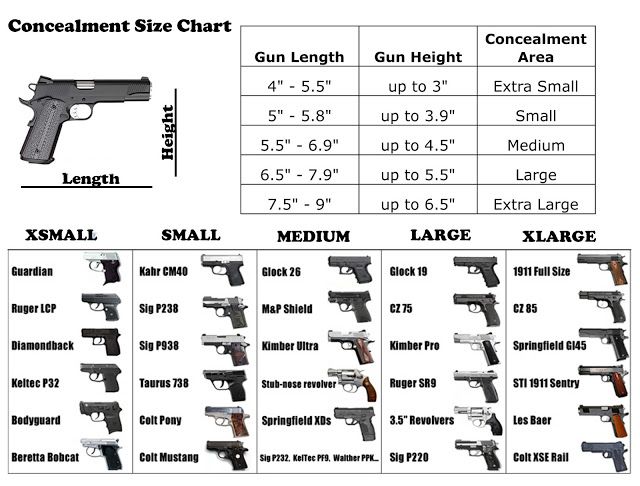
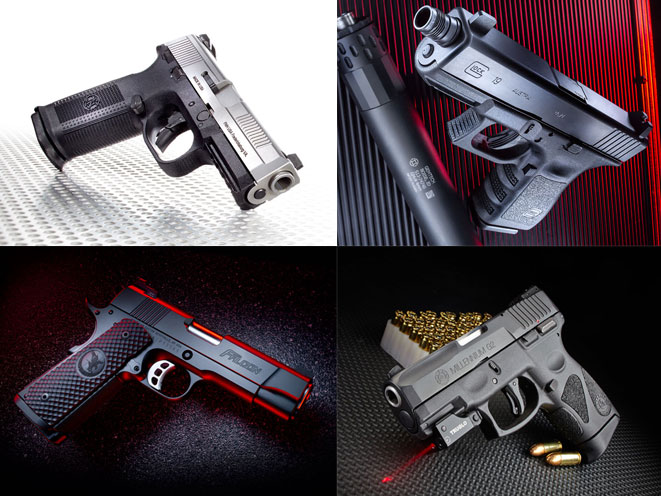
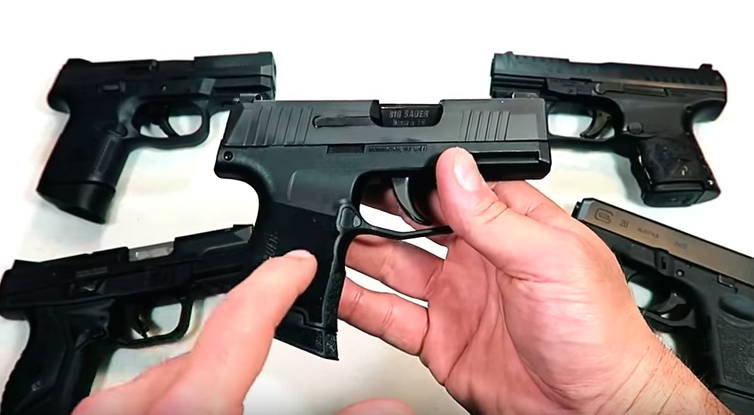
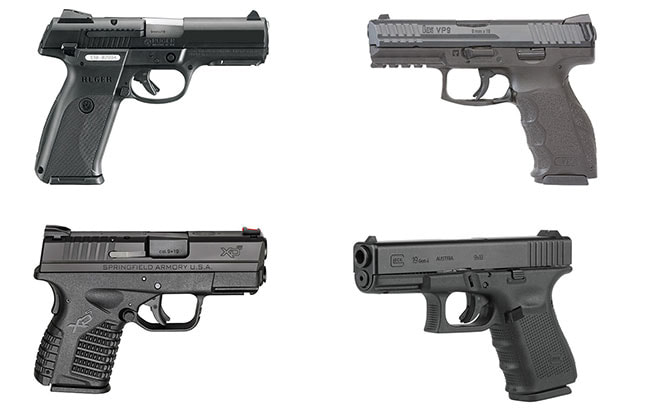
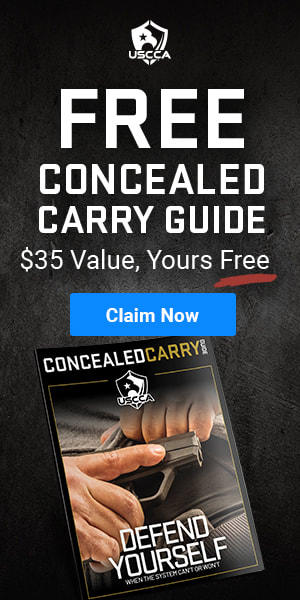
 RSS Feed
RSS Feed



